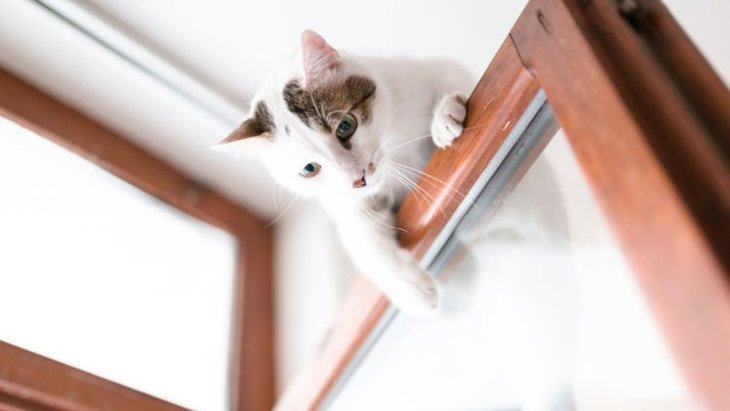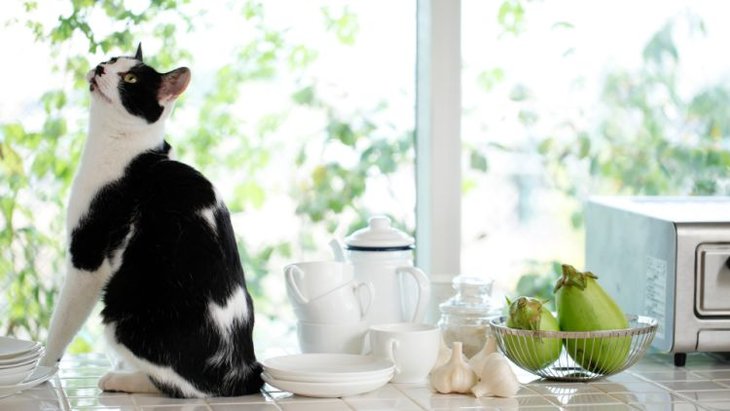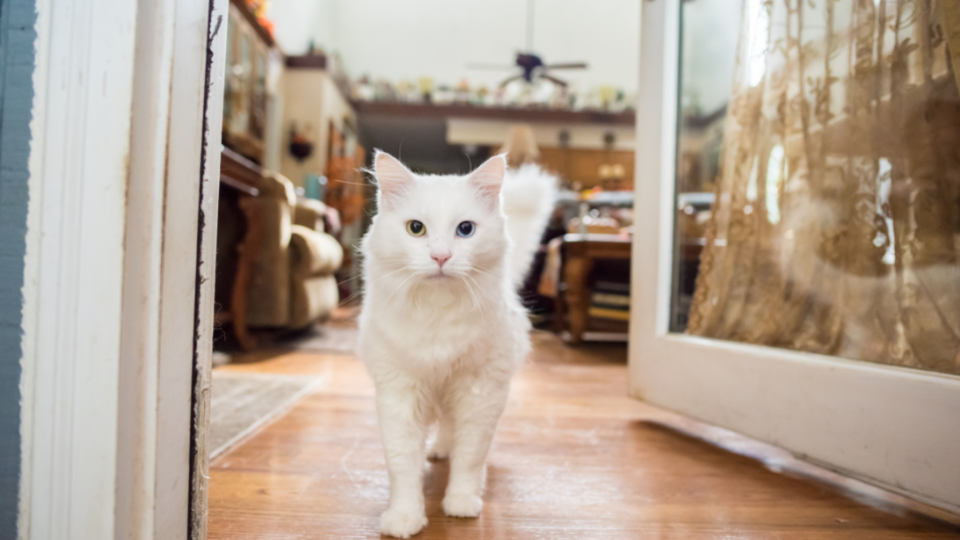Is Pet Insurance Worth It For Indoor Cats?
Reviewed by Kari Steere, Licensed Insurance Producer
Contributions by Dr. Ricky Walther
Caring for our cats is an important responsibility, and part of that responsibility includes providing access to essential veterinary care. However, pet parents should be aware that many veterinary expenses can quickly add up.
Common illnesses in cats, such as urinary tract infections or kidney diseases, can easily cost hundreds of dollars to treat, whereas unexpected injuries can reach into the thoudsands.
Cat insurance can help protect you against this financial risk and ensure your loved one has access to gold-standard veterinary care, if and when they need it, by reimbursing you for covered vet costs paid out-of-pocket.
Some clients wonder if cat insurance is worth it for indoor pets, and the answer is yes. Here are five reasons why:
- Kittens are highly prone to injury
- Indoor cats face many of the same health risks as outdoor cats throughout adulthood
- Indoor cats have a higher risk of certain health issues than outdoor cats
- The cost of pet care typically increases with age
- Indoor cat insurance promotes routine care that can increase longevity in pets
Kittens are highly prone to injury
Despite our best efforts, kittens can still get into plenty of mischief the second we’re not looking.
Cats may have a reputation for always landing on their feet, but this is simply not the case. Kittens are often excited to begin exploring the world around them, leading to a lot of climbing and jumping. However, this can end poorly if a kitten lands improperly because kittens have softer bones than adult cats.
Frequently, we see kittens for injuries where they’ve climbed onto a tall surface, such as a railing or curtain rods, and fallen or gotten their feet tangled up in the curtain during the fall. Both of these scenarios can result in fractured legs.
Apart from the pain, a broken or fractured leg in a young kitten can also disrupt their growth plates, which can require intensive corrective surgery and, in the worst cases, amputation. Treatment for fractured legs will also typically need several follow-ups to ensure that your cat is recovering properly.
Kittens are more susceptible to broken bones in certain parts of their body, such as their tail, which is an extension of their spine. Often, a kitten will accidentally get their tail trapped underneath a door, which can cause a severe injury. Kitten concussions are another pretty common accident caused by falls from high places or trauma.
Additionally, kittens commonly sustain soft tissue injuries, such as pulled muscles or sprains. While soft tissue injuries will often heal on their own, it’s recommended that your kitten still see their veterinarian to ensure they don’t have a more severe injury and are healing correctly.

It’s estimated that most pet parents will have at least one emergency veterinary bill that costs $2,000 - $4,000 during their pet’s lifetime1. Unfortunately, we just don’t know when this will happen. Many pet parents think that their cat won't experience a serious medical condition until later on in life. Although your kitten may be in great health, they're still highly prone to injuries that could stunt their growth and development without proper veterinary treatment.
New pet parents who have recently adopted a young cat may not have enough time to save up for such unexpected vet bills. Some emergency vet visits can cost up to $5,000. Without adequate budgeting, many pet parents risk financial hardship to give their cats the critical care they need.
Hopefully, this doesn't occur to your feline friend, but one of the reasons why pet insurance is worth the cost is for the peace of mind it provides, just in case it does. Rather than looking at thousands of dollars in veterinary expenses, you can pay a small amount each month — in some cases, as with Bivvy, as low as $9 per month — and know that you'll be covered in an emergency.
Cat insurance for less than your Netflix subscription? Find out now.
Many cat insurance providers offer flexible plans that allow you to select your desired degree of coverage. Accident-only coverage can reimburse you up to 100% for out-of-pocket veterinary costs related to accidental injuries, such as broken bones or swallowed foreign objects, once your deductible has been met.
These plans are less comprehensive than those that provide Accident & Illness coverage, but they're a great way to save money while still having ensuring your cat has access to affordable care in case they ever hurt themselves indoors.
Indoor cats face many of the same health risks as outdoor cats throughout adulthood
Many pet parents think that outdoor cats face more health risks than indoor cats, but that's not necessarily true — they just encounter them for frequently.
As adults, indoor cats are still susceptible to trauma and wound abscesses, which are commonly seen in pets who get into fights with other felines in the neighborhood. Indoor catfights are also common, however, and often occur when introducing a new four-legged family member. In many cases, this happens while pet parents are away, so you might not notice the injury until it turns into an abscess.
Trauma to your cat can also occur when your cat runs into sharp furniture in your home or catches a toy or claw to their eye. If this happens, I suggest taking your cat to the vet as soon as possible, because eye trauma can worsen rapidly.
Indoor adult cats are also just as prone to ingesting something toxic as outdoor cats. For example, many plants around our homes, like lilies, azaleas, and holly, are poisonous to cats2. Your cat may love the smell of the plant, decide to give it a taste, and end up needing emergency veterinary care because consuming toxic plants can cause kidney damage, along with a host of adverse symptoms.
Viral infections can still be spread to indoor cats via exposure. For example, you may go over to a friend’s house and unknowingly come into contact with their pet, who has a viral infection. When you return home, close contact with your indoor cat could spread this viral infection to them, even though they never went outside.
Other risks to indoor cats include parasites and insects that come inside the home. Humans and dogs can both bring fleas in from outside, mosquitoes may get through screens or cracks and transmit heartworm in cats, and insects can cause painful bite wounds that may require medical attention. If your cat is shying away from you, hiding, or tense, contact your veterinarian immediately for your next steps.
While respiratory diseases may be more common among outdoor cats, indoor cats can still experience respiratory problems, such as feline asthma, which is often caused by cleaning products, essential oils, air fresheners, dust, and more. Other issues, like pneumonia, can rack up significant veterinary care costs, especially if your cat needs to be on a ventilator and hospitalized. In fact, the highest cat insurance payout of 2020 was $24,545 for a domestic shorthair with pneumonia.3
$24,545
paid out in a pet insurance claim for a cat with pneumonia
Indoor cats have a higher risk of certain health issues than outdoor cats
Indoor and outdoor cats are both susceptible to urinary issues, especially male cats whose urethra is so tiny that it can end up getting plugged by mucus, inflammation, or blood. Both male and female cats are at a heightened risk of urinary issues and blockages, especially when compared to dogs who have a much larger urethra.
A true blockage can easily cost upwards of $3,000 to $5,000 because the affected cat will need to be hospitalized and have the blockage removed. Then a urinary catheter will be placed, and time given to allow the inflammation to go down. Urinary issues are so common that some patients even come into my clinic every few months because their cat is having another flare-up.
I’ve even had male kittens experience their first blockage as young as two to three weeks old, with one notable case of a six blockages before he was three months old. This puts a significant financial burden on the pet parents who need to take their cat in to have the blockage removed repeatedly.
At this time, vets aren't entirely sure what causes this issue, known as idiopathic cystitis, but it's believed to be connected to stress and a lack of stimulation, which indoor cats are more susceptible to.
I'm not sugges, because there are many health risks for outdoor cats too — including everything from ear mites, to getting lost, and being attacked by another animal. However, it means that pet parents should try to provide as much stimulation and exercise as possible for indoor cats so they can release stress, stay active, and prevent medical issues.
Cats may also have an intestinal blockage from a foreign body, such as eating a string, hair tie, etc. The string can get stuck on your cat’s tongue and eventually end up pulling their bowel loops together, causing the cat pain as the string scrapes and cuts along the sides of their intestines. Unfortunately, this is very dangerous because strings and hair ties can cut a cat’s intestines and get stuck in various places.

Indoor cats are also more likely to become obese due to a lack of activity, which increases their risk of diabetes, pancreatitis, arthritis, and many other health problems.
All cats, indoor or outdoor, are also highly predisposed to dental problems. Research shows that anywhere from 50% to 90% of cats four years or older struggle with some kind of dental disease4. Dental disease is especially prevalent in cats who are switched to wet food and don’t have preventative dental care, such as teeth cleanings and regular at-home teeth brushing.
50-90% of cats over 4 years old
struggle with some form of dental disease
Without preventative dental care, some indoor cats may end up needing teeth extractions to remove teeth that are heavily covered in tartar. Even cats as young as two to three years old can experience heavy tartar and gingivitis. Fortunately, preventative dental care can reduce these risks, and cat insurance can give you peace of mind knowing that if your cat does need dental cleanings or teeth extraction, you’ve got a financial backup plan.
The cost of pet care increases with age
Many feline diseases develop due to age. Regardless of whether your cat is an indoor or outdoor cat, they are still at an increased risk of age-related diseases, such as kidney disease, lymphoma, inflammatory bowel disease (IBD), hyperthyroidism, and many more.
Unfortunately, these diseases are chronic conditions that can be expensive to treat over time. For example, kidney disease often requires special diets, ongoing bloodwork, medications, and more. Blood work for kidney disease may even be recommended as frequently as every other month, which can quickly add up cost-wise. Other conditions, like hypothyroidism in cats, may require medication for the remainder of your cat’s life.
Diseases like lymphoma and inflammatory bowel disease (IBD) can require extensive testing to figure out which condition your cat ultimately has. For example, your veterinarian may recommend complete abdominal ultrasounds and switching your cat’s diets to help them identify the root problem. Then, long-term steroids, medications, and even chemotherapy may be needed to treat and manage your cat’s illness.
Cancer is another age-related disease. Unfortunately, cancer is one of the leading causes of death in cats over the age of six. The initial cancer diagnosis itself can cost between $1,000 and $2,000, with chemotherapy costs often costing between $3,000 and $5,000. If radiation is needed, it can cost up to $10,000 depending on where the cancer is located and where you live. These numbers can be scary. However, pet insurance can help offset these veterinary bills if these illnesses were not pre-existing conditions.
Cancer is one of the leading causes of death in cats over the age of 6
If you have a middle-aged cat in perfect health, this is a great time to choose a pet insurance plan that can act as a financial safety net for future health issues in senior cats that commonly occur. Even if you have a young cat or kitten, illness can strike earlier than expected.
For example, inflammatory bowel disease can affect young cats, even as young as three or four years old. Having a pet insurance plan in place allows you to provide your cat with needed emergency medical treatment or ongoing care for a developed chronic illness.
Indoor cat insurance promotes routine care that can increase longevity in pets
Pet insurance helps pet parents feel comfortable taking their cat to the veterinarian when they suspect something is wrong and feel less concerned about the cost of necessary diagnostic testing. Taking your cat to their veterinarian when you suspect they aren’t feeling good allows your veterinarian to catch illnesses or injuries earlier on.
In turn, this improves your cat’s prognosis and enables your veterinarian to alleviate symptoms and pain expediently, rather than waiting for symptoms to worsen. Catching illnesses in their early stages will usually be less expensive to treat and prevent the worst-case scenario that your cat's condition is beyond intervention, as some can no longer be treated after a certain point.
In addition to pet insurance, many veterinary providers offer supplemental wellness packages that can promote your cat’s optimal wellbeing. This can include special cat food, vitamins, heartworm supplements, and more to help your cat feel their best now and promote a healthier future for them.
Final Thoughts
All in all, I would strongly recommend pet insurance to all cat owners, whether you have a young kitten or an older cat. Life is unpredictable, and we never know when an illness or injury can strike. Pet insurance gives you a safety net so that you can rest easy knowing that your cat will have access to gold-standard veterinary care whenever they need it.
See which pet insurance is right for your best friend.
Do you want to find the best pet insurance?
Let's analyze your pet's breed, age, and location to find the right coverage and the best savings. Ready?
Analyze My PetAbout Pawlicy Advisor
The pet insurance marketplace endorsed by veterinarians, at Pawlicy Advisor we make buying the best pet insurance easier. By comparing personalized coverage and pricing differences we can save you a ton of money, up to 83% in some instances!
Instantly Compare Pet Insurance Plans
Guides
Determine If Pet Insurance Is Worth It
Comparison Charts
Find Your State
Dog Insurance
Pawlicy Advisor is the #1 pet insurance marketplace in the U.S. Recommended by veterinarians. Trusted by 1M+ Americans. Our team of veterinary advisors and licensed insurance experts are dedicated to helping pet parents give their dogs and cats the best possible care.
